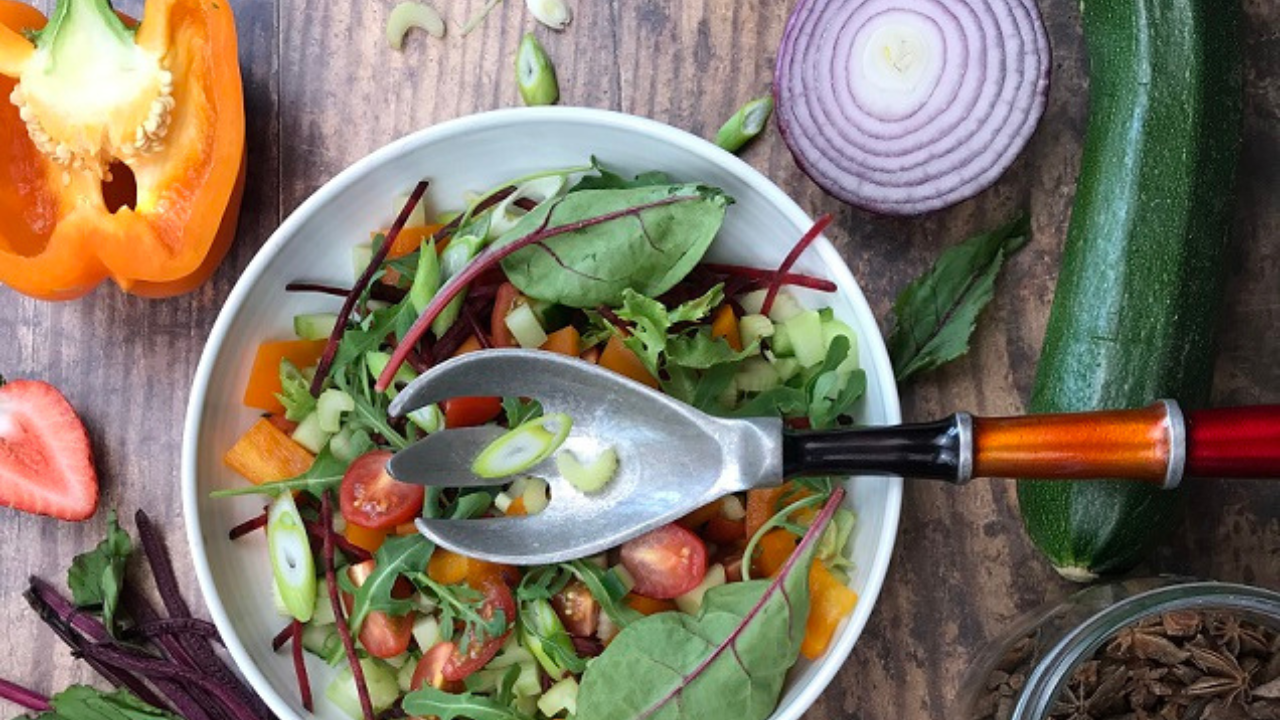Balanced Nutrition: What it is and how to do it simply

Nutritional balance, it’s a term we hear a lot in health circles, but what does it actually mean?
The truth is, I think it can mean different things to different people.
In its purest form, balancing nutrition means to include each of the major food groups: proteins, fats and carbohydrates (aka macronutrients) in your diet, and as far as possible, in every meal. Adopting this approach to eating helps you to balance your blood sugars, ensure you are getting essential fatty acids into your body and that you’re taking on as wide a range of nutrients as possible.
Unfortunately, popular culture and diet trends have confused us. Overemphasis on certain food groups to the exclusion of others, focusing on faddy themes like juicing, and promotion of low fat/hidden sugar products have distracted us from simple, fundamental nutrition.
Nutritional balance doesn’t have to be complicated, here’s an explanation of what it means to me and some simple ways that you can implement it in your diet:
Inclusion of healthy fats:
Why? Omega-6 and Omega-3 fatty acids are a vital part of our diet. They play an important role in the regulation of many responses in the body including inflammation and hormone production. It’s good to get the ratio right because it is thoughts that Omega-6 is pro-inflammatory and Omega-3 is anti-inflammatory. Omega-6 is present in a lot of processed foods, margarine and vegetable oils and we are consuming way too much in the Western world.
How?
- Choose Olive Oil over vegetable, sunflower and seed oils. Olive oil is rich in Oleic acid and Omega-9 which has no influence on inflammation.
- Increase your intake of Omega-3. Marine sources are more beneficial to the body, so for fish eaters, increase your consumption of oily fish like sardines, mackerel and salmon. For Vegetarians, good quality sources of Omega-3 are other marine sources like seaweed and marine algae supplements. It is present seeds and nuts like flax, chia and walnuts, but the body finds it harder to use this type of Omega-3.
- Consider having grass-fed butter over margarine and limit your consumption of saturated fat.
Inclusion of high fibre carbohydrates.
Why? Fibrous carbs are important for energy, balancing blood sugars and gut health. You may have heard of carbohydrates referred to as simple and complex. This refers to the molecular structure of the food, how quickly the food is digested and therefore how quickly sugars are released and absorbed by the body. The more complex a carbohydrate, the slower the release of energy into the bloodstream and the more chance that it contains good amounts of fibre that will stay intact until it reaches the gut. Healthy gut bacteria feed off fibre so including complex carbs in your diet makes for a happy gut.
How?
- Choose whole-grain over white products. Brown rice, pasta and bread are far better for you than the white alternatives.
- Increase your intake of dietary fibre: pulses, beans, grains, oats, and root veg are all good sources.
- Don’t overlook the fact that green leafy vegetables are great source of dietary fibre.
Include a source of good quality protein with each meal
Why? Protein is made up of smaller compounds called amino acids that are vital to our health. Some of them we can only obtain from food sources. Protein begins to be broken down by the body as soon as it hits the mouth, so when we combine protein, carbs and fats in meals it slows the digestion of the carbohydrates and the release of sugars into the bloodstream and contributes to a sense of feeling fuller for longer.
How?
- Common sources of protein are meat, eggs and fish, but don’t overlook other plant sources like beans, lentils, almonds, and green vegetables like sugar snap peas and broccoli.
- Aim to include protein in every meal.
Finally, get as wide a variety of vegetables as you can on your plate.
Why? Because you’ll benefit from a wide variety of nutrients and dietary fibre and a range of other plant compounds (known as phytonutrients) that are also thought to be beneficial to our health. The age-old adage, ‘eat the rainbow’, is good advice because different colours offer up different antioxidants and other goodies.
How?
Chuck them in and on wherever you can. Spinach is great to add to most things like curries and casseroles, add chopped green beans and sugar snaps to salads and try to get an extra side of veg on your plate with evening meals.
If you like the idea of creating nutritionally balanced dinners but could do with some inspiration, then take a look at The Nourish and Social Cooking Club.

